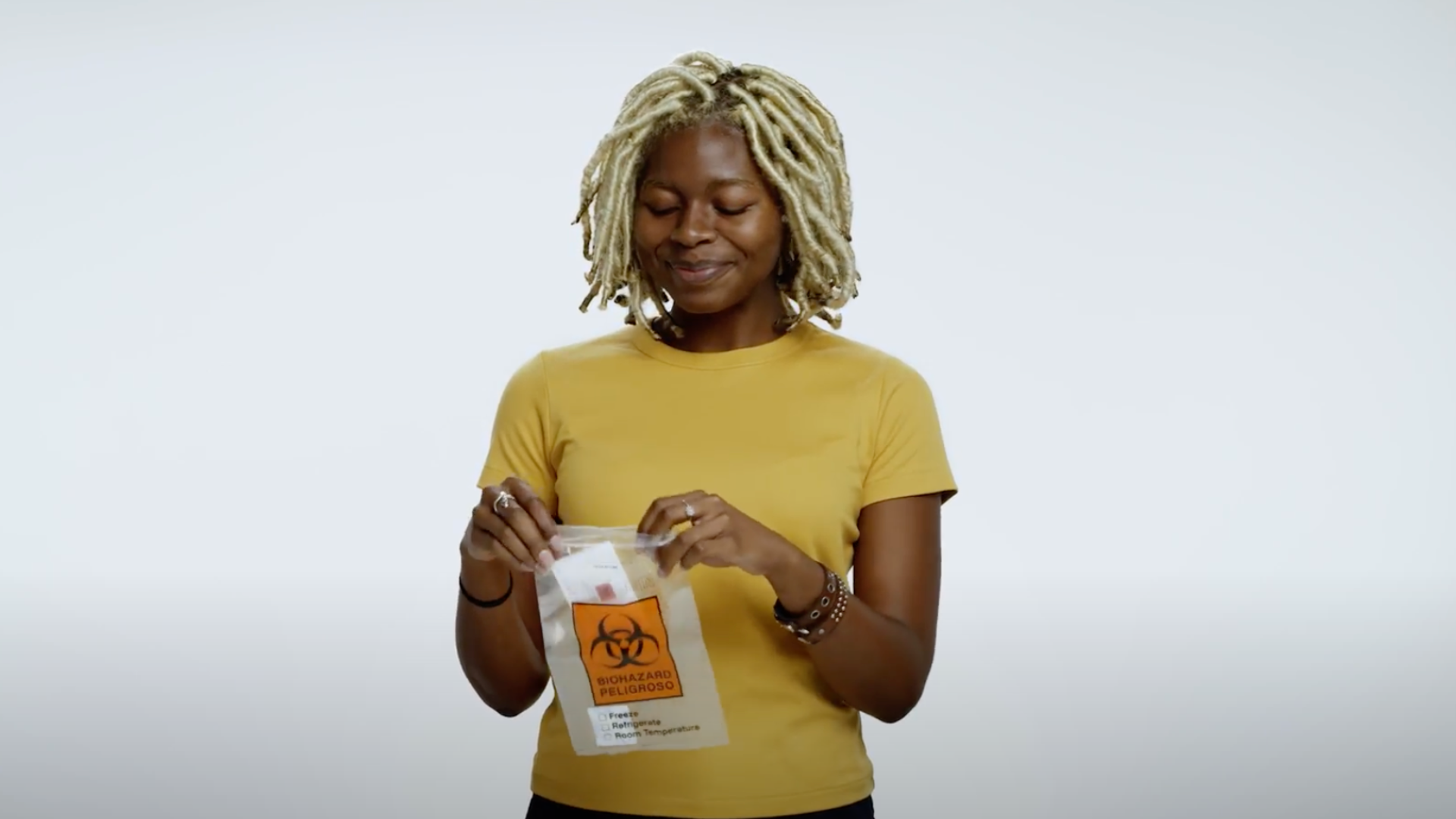
Ash Team
May 27, 2022
•
5 min read

Dried blood spot cards are a remote diagnostic tool used by major health systems, health plans, digital health companies, and public health departments to conduct remote screening operations. DBS cards allow patients to self-collect and submit samples to a telemedicine lab with only a small amount of blood rather than undergo a more invasive phlebotomy procedure. Providers can use DBS cards to screen for infectious diseases, certain types of cancers, HbA1c levels, STIs, and allergies—to name a few. This blog answers common questions about how dried blood spot cards work and how providers can use them to improve patient health outcomes.

DBS cards use filter paper to absorb blood samples. Patients prick capillary blood from a fingertip and blot it onto the card. Each card features five 13 millimeter circles, and each circle holds about 75-80 microliters of blood. The blood sample dries in a fibrous matrix and is shipped to a telemedicine lab for review. At the lab, technicians punch the five spots out. The spots are then eluted into a liquid solvent to extract target analytes from the paper. Technicians analyze samples against markers to determine results.
Home diagnostics through dried blood spot cards can be used to screen for infectious diseases, fertility markers, allergies, cancers, comprehensive metabolic panels, and more. Some of the most popular panels from Ash Wellness that use DBS cards include:
Chat with Ash Wellness for a complete list of dried blood spot card test options.
HEDIS and Star Ratings help health plans attract and maintain members. Payors can use dried blood spot cards to launch at-home diagnostics programs that satisfy certain quality score requirements. Dried blood spot cards facilitate medication adherence initiatives, vital for optimal treatment outcomes across various conditions, and measured by both HEDIS and Star.
For population screening, DBS cards aid in preventative measures like kidney health screenings for diabetes patients, which aligns with HEDIS requirements. DBS cards enable remote HbA1c testing, fulfilling HEDIS guidelines and Medicare Star Ratings criteria for monitoring blood sugar control. By leveraging DBS cards for comprehensive healthcare initiatives, health plans, hospitals, and providers can elevate their scores and ultimately improve patient care standards.
Mistr uses DBS cards to conduct quarterly HIV and creatinine tests for PrEP users across the United States. This business ships over 10,000 kits a month to onboard and monitor customers on PrEP. Without DBS cards, customers would need to visit labs every three months to get blood drawn. Only two in five people keep taking PrEP two years after starting. According to a public health investigation published on the JAMA Network, “individuals with lower socioeconomic status, and individuals with a substance use disorder were more likely to experience gaps in the PrEP continuum of care.” Home diagnostics through DBS cards helps providers close care gaps and allows businesses to reach and maintain PrEP users for a longer period of time.
At-home diagnostics broaden popular telehealth options, make healthcare more accessible to vulnerable communities, help reduce the racial care gap, expand HIV care, and more. DBS cards tests are an easy point of intervention for people who might not already interact with healthcare. Digital health companies can use DBS cards to engage customers in a remote care flow and offer testing partnered products like skincare, allergy medication, or food as medicine services.
DBS card testing is also particularly useful for public health initiatives. Street teams responsible for collecting blood samples normally have to worry about transporting blood at temperature with a stabilizer. DBS cards can be stored and sent in envelopes. DBS home health testing empowers teams to collect and store a greater number of specimens without the samples going bad.
Most people aren’t familiar with the DBS self-testing process, which is why Ash Wellness created video tutorials and digital instructions for our clients and providers to share with patients. We show patients how to collect blood for a positive self-testing experience through telemedicine services.

Yes! While DBS card testing is slightly less sensitive for certain markers due to reduced sample quantity, peer-reviewed studies report that it can pick up diseases like HIV, Hep B and C, or COVID antibodies.
Schedule a time to chat to receive detailed documentation on DBS cards.
DBS tests require a small amount of blood from a pricked finger tip, which the patient then presses onto a dried blood spot sample card. DBS cards are easy to self-collect, store, and transport. DBS is not approved for all tests, and the elution step adds an additional four hour wait time.
However, DBS card self-testing breaks down barriers to care for patients. This allows hospitals and clinics to reach patients they might not normally have access to and helps digital health companies scale quickly without hiring skilled technicians. Providers can order DBS card tests to patients via a regular drop-down option in their EMR system.
Phlebotomy, which relies on intravenous extraction, requires skilled staff and special equipment. A phlebotomist or lab technician punctures a vein and draws enough blood to perform multiple tests. Phlebotomy is expensive and doesn’t necessarily break down barriers to care. The blood needs to be transported with a stabilizer within temperature range, which can increase cost.
At Ash Wellness, we specialize in empowering clients to improve patient outcomes and lower costs by introducing extensive at-home diagnostics programs tailored for hospitals, clinics, accountable care organizations, and consumer or state health plans. We provide an end-to-end solution with over 150 varieties of diagnostic tests at our disposal, including screenings for HbA1 levels, STIs, colorectal cancer, and allergies. Our expansive national network of CLIA/CAP certified labs, seamless provider-of-record API integration, customizable white-labeled kitting options, and user-friendly digital tools streamline the process, enabling clients to launch new programs swiftly, often within a matter of weeks.